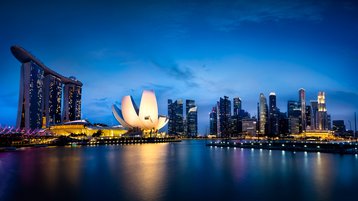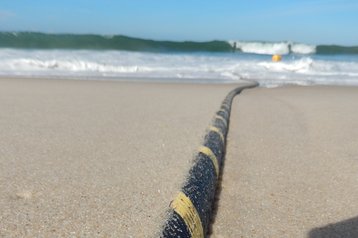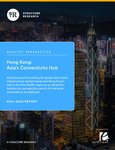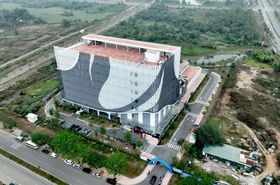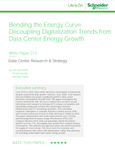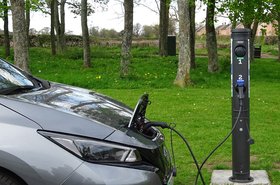In a move that stunned industry observers, Singapore announced on May 30 that it would release more data center capacity to the tune of 300MW, a substantial figure and a new policy direction for the nation-state.
Singapore had long held the position of a data center hub in Southeast Asia. However, climate concerns meant it had to dial back on its data center ambitions with a three-year moratorium a year before the pandemic hit. Since lifting the suspension, Singapore has allocated a mere 80MW for four new data centers under the Call for Application - Pilot Data Center (DC-CFA) scheme in 2023.
The commitment to provide 300MW “in the near term” is therefore a major development, but what prompted the shift? And what is Singapore’s strategy amid surging competition from its neighbors? Crucially, under what conditions can data center operators gain access to this newly released capacity?
A senior Singapore Infocomm Media Development Authority (IMDA) spokesperson spoke to DCD to shed light on this development.
The Green Data Center Roadmap
The 300MW will come as part of a newly unveiled Green Data Centre (DC) Roadmap drawn up by IMDA, so it does have conditions attached. According to the statutory board, the roadmap was developed to chart a “sustainable pathway” for the continued growth of data centers in Singapore to support the nation’s digital economy.
Per the roadmap, Singapore hopes to work with the industry to pioneer solutions for more resource-efficient data centers. One way to view it is as a carrot that it can use to spur data center operators to innovate and accelerate data center efficiency on both hardware and software levels.
It is all well and good to talk about allocating hundreds of megawatts of capacity for data centers. But with electrical grids around the world heaving from electrification and sharply rising power demands, is Singapore in a position to deliver this capacity to data center operators today?
“The [Singapore] government is already proactively working with the energy sector to upgrade our infrastructure, particularly for power, to make sure that the infrastructure is capable of supporting these demands and yet meet our climate commitments," the IMDA spokesperson says.
It is worth pointing out that the roadmap alludes to green energy options, with an additional 200MW for operators who turn to green energy. This means the 300MW is merely a start, and the IMDA spokesperson says there’s no reason to limit it if green pathways are used to power the data centers.
Allocating the capacity
How will the new capacity be allocated? This is still a work in progress, and DCD understands from industry sources that the IMDA has already started meeting data center operators about the Green DC Roadmap immediately after the announcement.
“[The Economic Development Board (EDB) and IMDA] are working together on this. We are studying options for the allocation. The DC-CFA was the first pilot process where we look at how we can have a process to bring in the best-in-class, very efficient data centers,” explained the spokesperson.
“Going forward, in the same spirit, we want to continue bringing in best-in-class, sustainable data centers that bring innovative solutions and economic value, and are sustainable at the same time. We are studying various options. We will announce them when we are ready.”
Data center operators can probably expect data center standards to play a role in any appraisal process. When asked about how the IMDA plans to support the industry, the spokesperson pointed to various standards the organization had helped establish, such as the Tropical Data Center Standard (SS 697:2023), which promotes operating data centers at higher temperatures.
The Green Mark for Data Centre scheme is also currently being reviewed with an update envisioned by the end of 2024. Ultimately, the goal is to get all data centers in Singapore to achieve a PUE of at least 1.3 or better over the next decade.
Tilting the playing field
But is 300MW of near-term supply enough to move the needle, given how the latest data centers are easily 100MW or larger? Indeed, a market report by BMI noted that Singapore is unlikely to attract “large-scale investments in data center capacity from foreign investors” despite the Green DC Roadmap, citing the 2,500MW of data center capacity being constructed in neighboring markets, of which 1,800MW are in the Malaysian state of Johor across a one-kilometer causeway.
This assumes that Singapore is attempting to compete on a level playing field, however, which is likely the last thing it wants given its severe constraints. To put things into perspective, Singapore is around the size of New York City and has no natural resources. And though it has attempted to blanket the entire island with solar panels, including deploying floating solar panels on its multiple reservoirs and at near-shore locations at sea, solar will provide a mere three percent of its electricity by 2030.
To get ahead, Singapore must play smart and tilt the playing field in its favor, not try and go toe-to-toe with other data center markets. This explains its plan last year to double its submarine cable capacity over the next decade. In context, Singapore already has 26 cables landing on its shore when the announcement was made – more than Japan with a population that is more than 20 times larger.
With the Green DC Roadmap, Singapore hopes to harness the broader data center ecosystem to achieve never-before-seen outcomes.
“If the industry can come together, across ecosystems [and] not just the data center players, they can work with upstream and downstream equipment suppliers, chip makers; they can also work with the energy power suppliers and find solutions in this space to build efficient green data centers,” said the spokesperson.
Navigating the road ahead
Of course, getting there will be no walk in the park. To pull its vision off, Singapore must work with the industry to address the multiple intractable problems from green software, improve cooling efficiency in the tropics, and create a new generation of data centers with sustainability at their core.
“We need to start looking at [sustainable data centers] because we cannot wait," the IMDA spokesperson says. "Singapore is small. We don't have alternative sources of energy. It's precisely because of that I think we want to see whether we can turn this into opportunity.”
The spokesperson pointed to remarks made by Singapore Senior Minister of State Janil Puthucheary at a closed-door discussion at the ATxSummit conference in May that DCD attended. In it, the Minister described how Singapore successfully addressed its severe water challenges and transformed itself from one of the most water-stressed nations into one having a significant amount of water resilience.
Clearly, Singapore aspires for similar success with data centers.
Of course, it is arguable that Singapore had already embarked on the journey toward sustainable data centers several years ago. For instance, we previously reported on efforts to explore the implementation of a hydrogen power plant for data centers, and efforts by Singapore organizations to develop a medium to store and transport cold energy from its LNG terminal to data centers.
Elsewhere, Singapore has started importing renewable energy, while Keppel Data Centres is also building a floating data center park that will potentially utilize seawater for cooling, and which should be ready later this year.
What would success look like? Unsurprisingly, it won’t be defined by the number of data centers but by the trajectory of Singapore’s digital economy.
“These opportunities can be made available here to grow Singapore's economy, to provide opportunities for people and businesses," the IMDA spokesperson concludes. "Data centers are the critical infrastructure for data flows, data transactions, for anything digital. The growth that we want to see is to benefit the ecosystem for both work and play here.”
DCD>Connect Asia Pacific 2024 gets underway today in Bali. Click here to find out more about the event.

